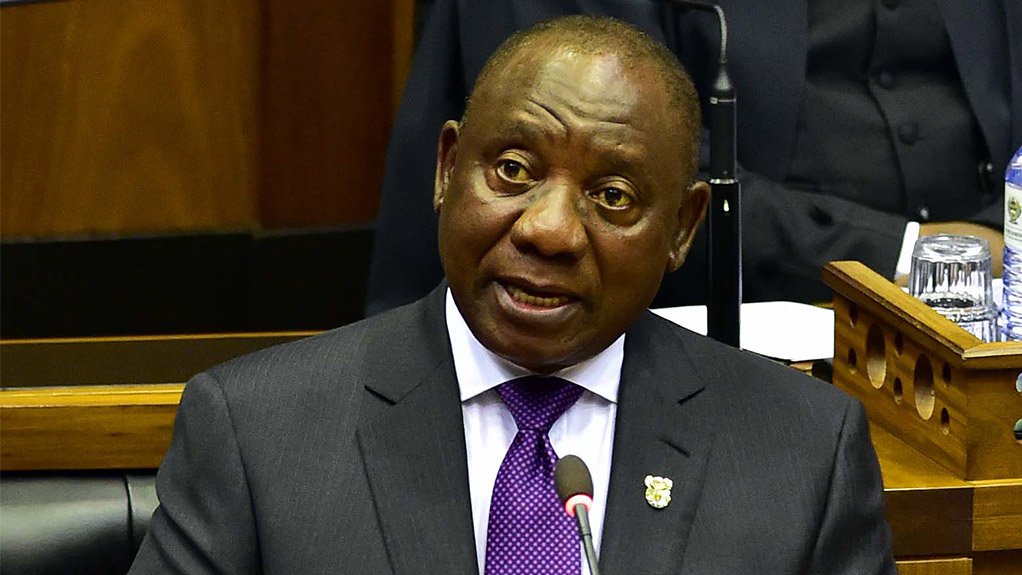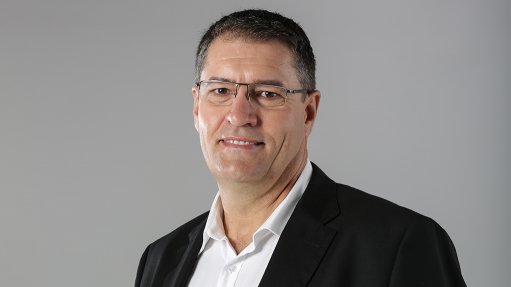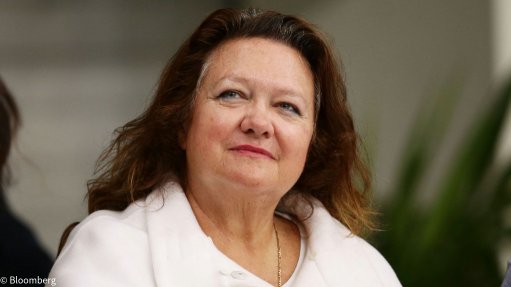Ramaphosa promises rapid power roll-out, but two-year timeframe for solving crisis ambitious
President Cyril Ramaphosa listed the rapid expansion of South Africa’s electricity generation, primarily through the building of additional renewable-energy capacity, as a key priority in government’s long-awaited ‘Reconstruction and Recovery Plan’, which he unveiled in Parliament on Thursday.
The other components of the plan, developed in response to the economic and employment fallout from the Covid-19 pandemic, included: a multibillion-rand infrastructure roll-out; the creation of 800 000 employment opportunities through public works schemes; initiatives to revive industrial growth; a fast-tracking of reforms to reduce the cost of doing business and lower barriers to entry; actions to combat crime and corruption; and programmes aimed at improving the capability of the State.
Speaking during a hybrid live and virtual joint sitting of Parliament, Ramaphosa said the measures were designed to achieve “sufficient, secure and reliable energy supply within two years”, a timeframe that seems overly ambitious given the lead times involved in procuring and building new generation capacity.
The President said an accelerated implementation of the Integrated Resource Plan “should bring around 11 800 MW of new generation capacity into the system by 2022”, with more than half of that energy generated from renewable sources.
The figure was in line with a recent Ministerial determination Gazetted by Mineral Resources and Energy Minister Gwede Mantashe opening the way for the procurement of 6 800 MW of wind and solar photovoltaic, 513 MW of storage, 3 000 MW of gas or diesel to power and 1 500 MW of new coal.
The Reconstruction and Recovery Plan, thus excludes nuclear, which had been included in an earlier draft of the plan leaked to the media over the weekend.
A procurement process is already under way under the so-called Risk Mitigation Independent Power Producer Procurement Programme (RMIPPPP), through which government is seeking to secure 2 000 MW of ‘emergency power’.
Ramaphosa said the RMIPPPP would unlock emergency supply within 12 months, but the actual bid documentation caters for projects becoming fully operational by no later than the end of June 2022.
Ramaphosa also said that the process to implement the fifth bid window, or BW5, of the Renewable Energy Independent Power Producer Procurement Programme (REIPPPP) had begun, but the procurement process itself is still some months off.
Government’s Independent Power Producer (IPP) Office, which oversees the procurement of the electricity from private generators, indicated in September that BW5 could be launched by year-end, but only committed to releasing the request for proposals (RFP) before the end of January 2021.
Hitherto, REIPPPP bidders have been provided with three months to respond to an RFP, while the IPP Office has typically required a further three months to conduct their evaluation of the bids before announcing preferred bidders.
It then typically takes between six to eight months for preferred bidders to progress their projects to financial close, which is followed by a construction phase that, in the case of utility scale wind and solar plants (the quickest to build relative to coal or gas plants), endures for between 18 and 21 months.
Ramaphosa said that, in the immediate term, agreements will be finalised with IPPs to connect over 2 000 MW of additional capacity from existing projects, as well as from projects concluded under REIPPPP BW4 by June 2021.
Several BW 4 projects, construction of which was delayed from 2014 to 2018 after Eskom refused to sign contracts with preferred bidders, have already entered into commercial operation.
Promisingly, the President announced that further steps were being taken to enable power generation for own-use.
“The current regulatory framework will be adapted to facilitate new generation projects while protecting the integrity of the national grid. Applications for own-use generation projects are being urgently fast-tracked,” he said.
The Reconstruction and Recovery Plan also embeds the agreement concluded by the social partners at the National Economic Development and Labour Council regarding the restructuring of State-owned electricity producer Eskom and addressing its unsustainable R480-billion debt position.
“The work of restructuring Eskom into separate entities for generation, transmission and distribution continues and will enhance competition and ensure the sustainability of independent power producers going forward.
“To achieve this, a long-term solution to Eskom’s debt burden will be finalised, building on the Social Compact on Energy Security recently agreed to by social partners.
“Through these measures, we aim to achieve sufficient, secure and reliable energy supply within two years,” Ramaphosa said.
In a separate forum also on Thursday, Eskom CEO Andre de Ruyter indicated the vertical separation of Eskom into separate transmission, generation and distribution entities was being prioritised and that the transmission entity would be functionally separated from Eskom’s generation and distribution units by the end of March 2021.
De Ruyter said that the full legal separation of the transmission unit was planned for December 2021, but that the process of integrating the system operator and the creation of a standalone Independent System and Market Operator would take longer, with progress dependent on several legislative and regulatory approvals outside of Eskom’s direct control.
Comments
Press Office
Announcements
What's On
Subscribe to improve your user experience...
Option 1 (equivalent of R125 a month):
Receive a weekly copy of Creamer Media's Engineering News & Mining Weekly magazine
(print copy for those in South Africa and e-magazine for those outside of South Africa)
Receive daily email newsletters
Access to full search results
Access archive of magazine back copies
Access to Projects in Progress
Access to ONE Research Report of your choice in PDF format
Option 2 (equivalent of R375 a month):
All benefits from Option 1
PLUS
Access to Creamer Media's Research Channel Africa for ALL Research Reports, in PDF format, on various industrial and mining sectors
including Electricity; Water; Energy Transition; Hydrogen; Roads, Rail and Ports; Coal; Gold; Platinum; Battery Metals; etc.
Already a subscriber?
Forgotten your password?
Receive weekly copy of Creamer Media's Engineering News & Mining Weekly magazine (print copy for those in South Africa and e-magazine for those outside of South Africa)
➕
Recieve daily email newsletters
➕
Access to full search results
➕
Access archive of magazine back copies
➕
Access to Projects in Progress
➕
Access to ONE Research Report of your choice in PDF format
RESEARCH CHANNEL AFRICA
R4500 (equivalent of R375 a month)
SUBSCRIBEAll benefits from Option 1
➕
Access to Creamer Media's Research Channel Africa for ALL Research Reports on various industrial and mining sectors, in PDF format, including on:
Electricity
➕
Water
➕
Energy Transition
➕
Hydrogen
➕
Roads, Rail and Ports
➕
Coal
➕
Gold
➕
Platinum
➕
Battery Metals
➕
etc.
Receive all benefits from Option 1 or Option 2 delivered to numerous people at your company
➕
Multiple User names and Passwords for simultaneous log-ins
➕
Intranet integration access to all in your organisation




















